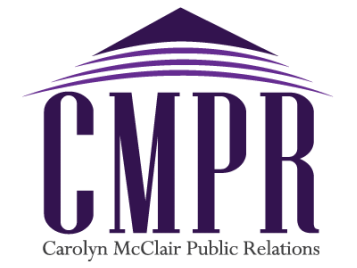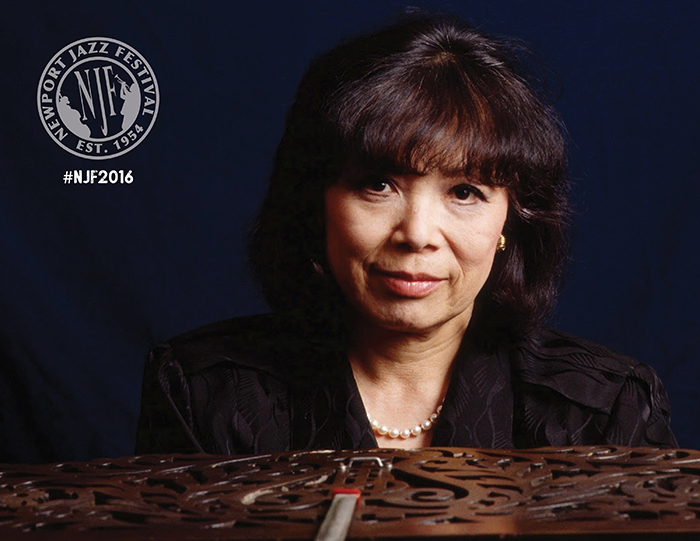Alone @ The 88s: Solo Piano at Storyville
Just a couple of years after the birth of the Newport Jazz Festival, a diminutive, Japanese Berklee College pianist named Toshiko Akiyoshi performed a set of no-nonsense, Bud Powell-pranced bop selections that let the world know she was going to be a force to be reckoned with. Six decades later, Ms. Akiyoshi has more than delivered on her promising potential. This Grammy-winning NEA Jazz Master, along with her husband, the enterprising saxophonist/flutist Lew Tabackin led the Toshiko Akiyoshi-Lew Tabackin Big Band from the seventies to the nineties. It was in that large ensemble that Akiyoshi cemented her reputation as an inventive, first-rate composer, able to combine the distinct musical styles of Duke Ellington, her former employer Charles Mingus, and the rich, ancestral Japanese folk music of her heritage. That brilliant blend of East and West is aurally illustrated on her recordings including Kogun, Sumi-e, and Long Yellow Road. And even though she recorded a number of excellent quartet, trio and solo albums: The Toshiko Trio, Finesse, Toshiko Akiyoshi at Maybeck, and Toshiko Akiyoshi Solo, her composing, bandleading and arranging duties, overshadowed her keyboard prowess.
Another keyboardist showcasing the ascendant evolution of her musical development is the 36 year-old, Vancouver-born, Brooklyn-based, Kris Davis. A member of bassist Eric Revis’ ensemble – who is also performing at the festival, Davis, who the MacArthur “Genius” grant-winning pianist Jason Moran declared was a “freethinking, gifted pianist…,” stylistically she comes straight outta Cecil Taylor, with a slight nod to John Cage. Classically trained since the age of six, she studied in her home country’s Royal Conservatory, earned her Bachelor’s Degree in Jazz Piano from the University of Toronto, attended the Banff Centre for the Arts Jazz program in 1997 and 1990, and earned a Master’s Degree in Classical Composition from the City College of New York. Her work as a sidewoman includes gigs with Paul Motion, Bill Frisell, Tim Berne, Tony Malaby, and Mary Halvorson. She’s composed works on commission from the Jazz Gallery, the Shifting Foundation, and released a number of CD’s as a leader, including, Rye Eclipse, The Slightest Shift, Paradoxical Frog, Good Citizen, Union, and her first solo album, Aeriol Piano.
Her set on July 30 at Fort Adams State Park will exploit all of the sonorities of the piano, which will include the pointillistic sounds of prepared piano – where the keyboard strings are augmented with nuts, bolts and other items that will propel the instrument into a twilight zone where Morton Feldman, Thelonious Monk, Gyorgy Ligeti and Luciano Berg merge and melt. ‘Learning how to play time in a certain way, learning how to improvise with certain tools … You want to check out as much music as possible,” she says in a JazzTimes interview. “It will widen what you can draw from.”
Jason Moran is also a fan of Cory Smythe, who, in turn, is a fan of Davis’ Aeriol Piano CD. And like Davis, he also blurs and blends the boundaries of where classical music ends and jazz begins. A native of Buffalo Grove, Illinois, and an alumnus of Indiana University and the University of Southern California, Smythe has worked in a number of vivid and varied stylistic settings, from his stints with pianist Vijay Iyer, saxophonist/composers Anthony Braxton and Steve Lehman, and drummer Tyshawn Sorey, to his work with violinist Hilary Hahn on their Grammy-winning album In 27 Pieces: The Hilary Hahn Encores, and as a core member of the International Contemporary Ensemble. Smythe has performed the compositions of John Zorn, George Lewis and Philippe Hurel, and was the featured soloist on Iannis Xenakis’ Palimpsest, and he’s worked with the San Francisco Contemporary Players and the Chicago Symphony’s MusicNOW. Smythe’s CD, Pluripotent boasts 13 miniature compositions that take the jazz/classical Third Stream hybrid to a whole ‘nother level. And when Smythe brings his aural alchemy to the Fort Adams stage on July 31, he will perform a set that will “be mostly improvised, likely drawing upon material from my forthcoming album, Autotrophs,” he says. “And depending on how things go, maybe a Monk tune or two!”
Though younger artists like Davis and Smythe are investigating the stylistic limits of the American and European idioms, it is not new. As the great bebop piano master Barry Harris says in a recent issue of Hot House magazine, “jazz is an extension of classical music. Jazz is Bach. Chopin is jazz. Beethoven is jazz. They were taught to improvise. We are a continuation of that.” And one of his disciples, the Italian-born New York-based pianist, composer, arranger and educator, Rossano Sportiello is a living example of Harris’ belief. Equally trained in the European tradition under the tutelage of famed pianist Carlo Villa at the age of nine, and in the American classical heritage which includes Harris, Dave McKenna, Ralph Sutton, Art Tatum, Fats Waller, Teddy Wilson, Count Basie, Earl Hines and Ellis Larkins, Sportiello gigged in his hometown of Milan. Sportiello possesses a strong, left hand that typifies the best of the stride styles of playing jazz piano that emerged in the thirties, as evidenced by his winning the 2009 Ascona Jazz Award in recognition of his expertise and mastery of jazz piano. You can hear Sportiello’s pulsating, percussive left hand on his 28 recordings as a sideman with Dan Barrett and Harry Allen, and as a leader, including his solo recordings, In the Dark, Piano on My Mind, Heart and Soul, and It Amazes Me.
When Sportiello engages with his piano conversation with himself on Sunday, July 31 at Fort Adams State Park, he’ll display a pianism that spans from Vladimir Horowitz to Hampton Hawes. “I make sure that every time I do a concert or make a recording, all of those different styles… can be there: the classical, the jazz, the stride the bebop, and the swing he says on a YouTube interview with Don Wolff “… it’s beautiful music. So let’s play it all.”
The emphasis on a strong left hand goes even further back than stride: It goes all the way back to the late 19th century when ragtime, considered by some scholars to be the first style of jazz, with its pianocentric combination of European classical and Scot-Irish folk idioms, and the march-like, Sousa-style, black-and-tan, rhythmic syncopation that emerged in Texas, Missouri and New Orleans. The great Baltimore-born, centenarian Eubie Blake was a master of that music, and wowed the crowd with his impossible ivory tickling when he played the festival in his eighties. His protégé, pianist/historian/author Terry Waldo, arguably the world’s greatest living exponent of the genre, takes to the Fort Adams Park stage on July 30, and his left hand will stomp the blues and get the joint jumping. Waldo wrote for a number of TV shows and movies including The Ted Mack Show, The Tonight Show, and Ken Burns’ PBS documentary, Unforgivable Blackness: The Rise and Fall of Jack Johnson, and he served as the musical director for the theatrical shows, Mr. Jelly Lord and Ambassador Satch. Waldo is the author of This is Ragtime, the 1976 companion book to his critically-acclaimed National Public Radio series, which fueled a revival for the art form that reached its zenith with the genre’s most famous tune, Scott Joplin’s ‘The Entertainer,” which was featured in the movie, The Sting. Waldo’s recordings as a leader include Jazz in the Afternoon, Feelin’ Devilish, Hot House Rag, and his latest, The Soul of Ragtime. Waldo, who currently teaches at Jazz at Lincoln Center, fell in love with the music growing up in Ohio, and in addition to mastering ragtime, is also well-versed in the musical styles of Jelly Roll Morton, James P. Johnson and other masters of the stride tradition. As Eubie Blake wrote in the foreword to This is Ragtime, “…Terry has spent a lot of time with me learning my music and learning about the people I have known and the way we used to live and perform. I mean that what Terry has learned from me is not so much the notes, but the history, the tricks, the attitudes, the essence of ragtime.”
As in most things of a jazz nature, everything leads back to New Orleans: that melting pot of peoples, food, and of course, music which gave birth to jazz. Musicians from the Big Easy by default are naturally eclectic. And the blind pianist/composer Henry Butler’s pianism is a boiling bouillabaisse of styles. He burst on the national scene in 1986 with his debut album, Fivin’ Around and other releases including The Village Voice, Orleans Inspiration, Homeland and PiaNOLA Live. Blinded by glaucoma since birth, Butler studied music at the Louisiana State School for the Blind, where his first instruments were trombone, baritone sax and drums before he switched to piano and voice. The great clarinetist Alvin Batiste at Southern University was an important mentor, and Butler earned a Master’s Degree in Music from Michigan State University in 1974, and taught at the New Orleans Center for the Creative Arts. He currently co-leads the group, The Hot 9, with trumpeter Steven Bernstein. They recorded Viper’s Drag in 2014. Butler’s music was also featured on HBO’s Treme and he’s worked with a diverse cast of musicians including James Carter, Corey Harris, Cyndi Lauper, Jeff Golub, and Claude Williams. He relocated to Colorado after Hurricane Katrina and now lives in New York City.
Blessed with an engaging, propulsive piano style that is complimented with his equally pleasant tenor voice, Butler’s music is more of a macrocosm than a style as the Newport audience will hear when he plays on July 30 at Fort Adams Park. “Of course, New Orleans has had a lot of great piano stylists”, Butler says on the website, Music Matters Review. “I tend to deal more with piano styles from the 40s on. Thinking about people like Champion Jack Dupree … Professor Longhair and Tuts Washington. There’s also Esquerita, a flamboyant New Orleans pianist who was one of the forerunners to Little Richard. Most people know of James Booker, who hit his stride in the late 60s and 70s and died in 1982. I fit into this line of players and composers. I’ve probably added some devices both in the rhythmical sectors and in the melodic and technical areas.”
Also on the Storyville stage will be a different set of strings brought to life by guitarist Mary Halvorson. An avant-garde ace and a master of improvised music, she is one of the instrument’s most in-demand musicians. Then, there’s The Westerlies, a New York-based brass quartet comprised of four childhood friends from Seattle – Riley Mulherker and Zubin Hensler on trumpet and Andy Clausen and Willem de Koch on trombone. With a sound that explores jazz, roots ad chamber music, the group has performed or collaborated with Radiolab, Bill Frisell, Dave Douglas, Vieux Farke Toure and many more.
The Newport Jazz Festival presented by Natixis Global Asset Management takes place July 29-31 at Fort Adams State Park and the International Hall of Fame at the Newport Casino. Artists include Chick Corea Trilogy with Christian McBride and Brian Blade, Norah Jones, Angélique Kidjo, Gregory Porter, Nels Clime Music from Lovers, Galactic, Kamasi Washington, Kneebody, John Scofield/Joe Lovano Quartet, Joey Alexander Trio, Charles Lloyd New Quartet, Lizz Wright, José James, Stefon Harris Sonic Creed and many more.
For more information and tickets, visit www.newportjazzfest.org.
In addition to the Festival’s presenting sponsor, Natixis Global Asset Management, support comes from Alex and Ani, Doris Duke Charitable Foundation, Rhode Island Foundation, North Coast Brewing Co., Ticketmaster and travel partner, WBGO Jazz 88.3 FM. The preferred hotels of the Festival are Hotel Viking, Newport Marriott, Hyatt Regency Newport and The Newport Harbor Hotel and Marina.


 RSS Feed
RSS Feed